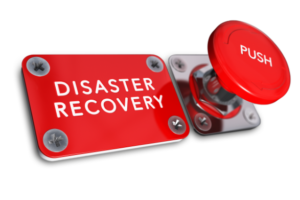BACKUP & DISASTER RECOVERY

One of the essential security requirements is disaster recovery. X10 Technologies specializes in analyzing existing network environments, enabling them to provide the best disaster recovery plans and designs.
In addition to this is the deployment of the system and configurations, which offer a functioning disaster recovery solution.
Storage backup is an important segment in the backup infrastructure and needs thorough monitoring. Lower-end home NAS devices and other general consumer electronics are often used to store corporate data due to its affordability.
However, these cheap storage solutions may not be reliable under 1/0 intensive workloads and may even lead to the backup files and metadata’s corruption.
There are two options in appraising the most suitable storage type for a disaster recovery scenario: Restore point objectives and Restore time objectives.
Deduplication appliances, Linear Tape-open devices, Directly Attached Storage, and S3-compatible Object Storage are the prospects depending on the required RTOs and RPOs.
Workloads can be duplicated to a DR site and be made available at a stand-by. When a disaster recovery situation occurs, the replicated data can be loaded to the DR site to allow data access to the end-user continuously and to prevent operational disruption. Once the production site is fixed and restored, the changes made into the VMs on the DR will be reloaded to the production site, and operations may resume to normal.
To ensure that the clients’ trust backup and disaster recovery services, the professionals and the management of X10 Technologies focus on the following aspects:
Awareness of customer requirements for business continuity and processes from both legal and practical angles. Gathering information and updates on mission-critical workloads, downtime source possibilities, backup strategy implementation, and restore point and time objectives. Current assessment of existing disaster recovery software used and implemented in industries and understanding its functions and contributions in attaining the business continuity requirements. Giving you the right recommendations that fit your budget, function requirements, and recent market trends.
